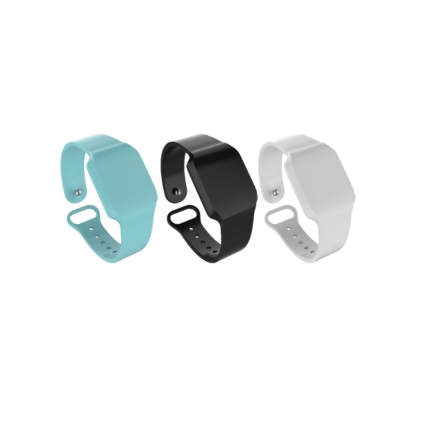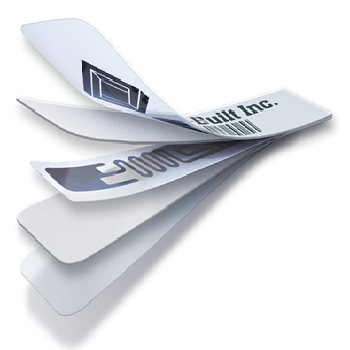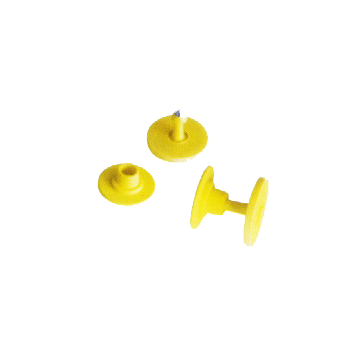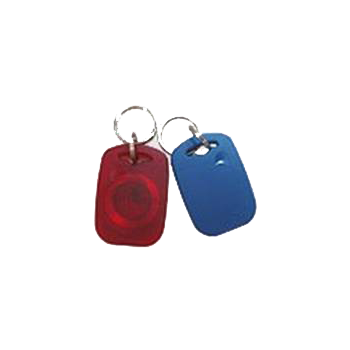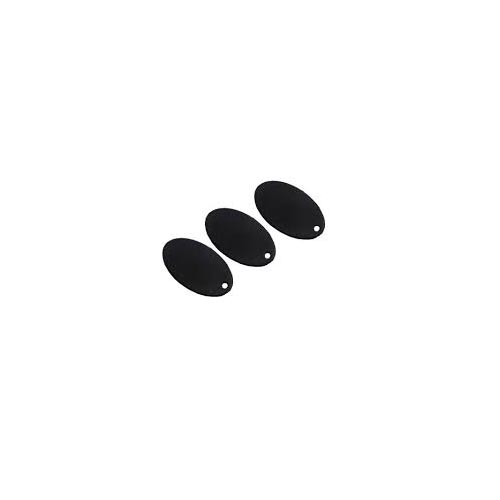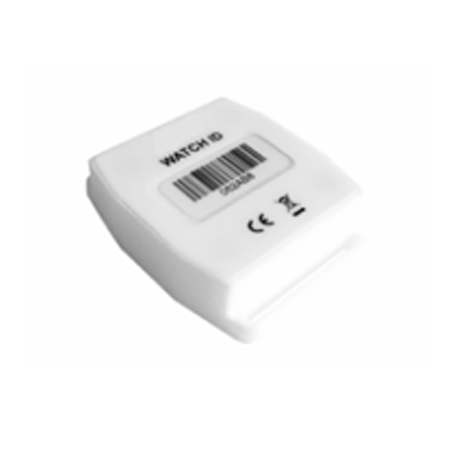A radio frequency identification or RFID tag is a device that when used in conjunction with a reader has the ability to track and manage physical assets and living beings, such as animals and employees. RFID tags can be made of different materials and come in various sizes. Additionally, RFID tags have various technical specifications, such as frequency range, data storage capability and power source. These variations allow RFID tags to be used in numerous industries and environments including, retail, automotive, medical, agricultural, construction, oil and gas, transportation, and food service
First, object tags must be placed on each asset or group of assets. Location tags can also be strategically placed to track movement. Once the tags have been placed they generally operate via call and response. For instance, once a passive tag receives a signal or call from a reader, it will respond by sending information back to the reader. This information includes its unique serial number, indicating location, and any other data stored in the tag’s memory. The information gathered and stored in a tag’s memory can be customized to meet the needs of the user. Alternative methods of operation for RFID tags include using them as beacons that automatically send information to a reader. Active tags are often used as beacons, as they are able to ceaselessly broadcast their own signal, as they are independently powered. Active tags can be used to track the minute by minute location of assets, which is ideal for tracking assets that are frequently moved, or that are in areas of constant movement.
A passive tag is powered by a RFID reader, as it does not have a battery. Conversely, an active tag are powered by a battery. Since passive tags do not use batteries, they have a shelf life of up to twenty years. Another advantage is that passive tags come in various sizes, including extra small. The main disadvantage of passive tags is that they do not have a long reader range. One of the main advantages of using an active tag is that it has a long reader range. Some of the other advantages active tags have included are having a large amount of data storage, the ability to run diagnostics and to independently monitor and regulate. Overall, both passive and active tags have advantages and disadvantages, but ultimately which one is used depends on the intended application of the tag.
The range of a tag varies based on the type and size of the tag and whether the tag is active or passive. For instance, passive tags can be low frequency, high frequency or ultrahigh frequency. The type of frequency impacts a tags range, with low frequency tags having a smaller reader range then ultrahigh frequency range. In addition to the specifications of the tag, the environment in which the tag is used can greatly impact a tags range. For instance, environments that contain a lot of metal or water often require the use of a low frequency tag, as those materials absorb and reflect radio waves impacting their ability to transmit. In these cases, readers must be in a closer proximity to the tag to get a reading. Similarly, the type of reader used can account for variances in range even when using the same type of tag.
Active tags have their own power source, typically a battery. The battery in active tags typically has enough energy to last 3-5 years. On the other hand, passive tags are powered by the reader. When a passive tag is scanned by the reader energy is transmitted via radio waves that are received through the tag’s antenna. The components of the antenna form a magnetic field that powers the tag. The power received by the reader is only enough for the information being stored in the tag to be transferred to the reader. Semi or hybrid tags are often powered by a combination of battery power and reader signals.
There are several types of RFID tags that can be divided into three categories; active, semi-passive and passive. Within these categories’ tags can be differentiated by several factors. The most common factor is frequency. There are three levels of frequency; low frequency, high frequency and ultrahigh frequency. The level of frequency one uses will depend on the intended application of the tag, as well as the environment and conditions under which the tag will be used. For instance, ultrahigh-frequency tags are better suited to withstand extreme temperatures, making them ideal for use in rugged environments. Similarly, choosing between an active, semi-passive or passive tag depends on the intended use. For instance, active tags have a longer reader range then passive tags, making them ideal for tracking assets over a vast expanse of property.
The components that an RFID tag are made of depends on the level of frequency used by the tag, high versus low, and the type of tag, active versus passive. For instance, a high-frequency passive tag is often made up of a silicon microchip attached to an antenna that is made of copper, silver ink, aluminum or another type of conductive material. The antenna and chip are attached to a layer of polyethylene terephthalate, paper or plastic. Low-frequency passive tags are constructed of the same materials, with the only difference being that the antenna is almost always made of copper. Active tags have all the same components as passive tags, with the addition of a battery and a circuit board. Also, active tags are often encased in plastic.
The price of RFID tags range between a few cents for individual tags to over 100 dollars for bundles. The price varies based on several factors including the type of tag, the number of tags required, the intended application of the tag and whether or not it is purchased with a reader or other sensors. Generally, the more specialized the tag required is the more expensive it will be.
We expanded substantially our selection of RFID tags. Below are the categories of our RFID tags with new features and resource pages.
Find RFID Tags By Frequency
Gen 2 UHF 902-928 MHz FCC
These RFID tags operate at the FCC standard frequency range used in North America, South America, and the Caribbean. This tag is the global industry standard being used by end-to-end supply chain applications. It has a long reader range surpassing 32 ft. (10 m), as well as have high-speed reading capability.
Gen 2 UHF 865-868 MHz ETSI
These RFID tags operate at the ETSI standard frequency range that is used throughout the European Union and countries following EU standards for end-to-end supply chain applications. These tags can function both indoors and outdoors.
High Frequency 13.56 MHz
These RFID tags have a long reader range of up to 39.37 in (100 cm). They operate utilizing the NFC protocol and have substantial memory space, which is ideal for storing data.
Low Frequency 125 kHz
These RFID tags have a short read range of up to 3.93 in (10 cm). These tags do not have a lot of memory storage, but they have sufficient writing capabilities and are not sensitive to radio wave interference. This makes them well suited for operation in environments with metal and water.
Semi Passive Gen2 UHF
These hybrid tags are powered by both signals from the reader and battery power. They have a read range of nearly 164.04 ft. (50 m) and operate in accordance with the Gen2 Electronic Product Code (EPC) standards.
Active 2.45 GHz
These RFID tags are battery powered and have the ability to be read from a distance of 65.61 to 328.08 ft. (20 to 100 m) at a high-speed.
Active 433 MHz
These RFID tags are the standard for the International Telecommunication Union (ITU) Region 1, which is comprised of Europe, Africa, the Middle East, the Persian Gulf, and Russia. These RFID tags are battery powered and have the ability to be read from a distance of 65.61 to 328.08 ft. (20 to 100 m) at a high-speed. These tags have the ability to be activated by an RFID reader when they are in range by broadcasting their unique IDs (conventional). They can also function as beacons by continuously broadcasting a signal that can be used for real time location systems.
Find RFID Tags by Feature
Animal Tracking RFID Tags
These RFID tags are attached to animals via plastic ear tags, or under the animal’s skin. These tags can help track the location of the animal and can allow the animal owner to identify each animal with certainty.
Hazardous Environment RFID Tags
These rugged RFID tags are designed to withstand harsh environments making them ideal for use in the industrial field.
Traceability RFID Tags
These RFID tags are ideal for use in the food packaging and transportation industry, as they help to improve food safety by monitoring the chain of custody of the food from the source to its intended destination.
Fashion/Retail RFID Tags
These RFID tags are used in retail settings to keep track of inventory in terms of location in-store and stock. They also provide a means of security that helps to prevent theft.
Metal Environment RFID Tags
These low-frequency RFID tags are designed to adhere to metal surfaces and to operate in environments with large amounts of metal.
Laundry RFID Tags
These rugged RFID tags are designed to withstand the conditions of the laundry industry including exposure to heat, chemicals, and water.
High-Temperature RFID Tags
These rugged RFID tags are designed to withstand exposure to high temperatures both indoors and outdoors.
Personnel Tracking RFID Tags
These tags are designed to help track people for the purposes of safety, security, control access, and location tracking. These tags are ideal for monitoring vulnerable groups, such as the elderly and the sick.
Medical Use RFID Tags
High-frequency RFID tags are capable of performing tasks, such as tracking blood and tissue samples. In addition, UHF RFID tags have the ability to track multiple items over long ranges making them suitable for tracking medical inventory and equipment.
Returnable Transit RFID Tags
These RFID tags have the ability to track items over long ranges. They are attached to items that are part of the transit process that can be reused, such as pallets and shipping containers.
Rugged RFID Tags
These UHF RFID tags are designed to operate under extreme conditions including fluctuations in temperature, exposure to chemicals, and generally abrasive environments.
Long Range RFID Tags
These are active RFID tags that have the capability to track assets over a long-range, typically surpassing 328.08 ft. (100 m).
Medium Range RFID Tags
These RFID tags have the capability of tracking assets over a range of around 32.80 ft. (10 m).
Short Range RFID Tags
These passive RFID tags have the ability to track assets within a short-range, typically less than 32.80 ft. (10 m).
UHF RFID Tags
Ultra-High Frequency RFID tags are capable of delivering a long reader range along with a higher speed of data transfer.

